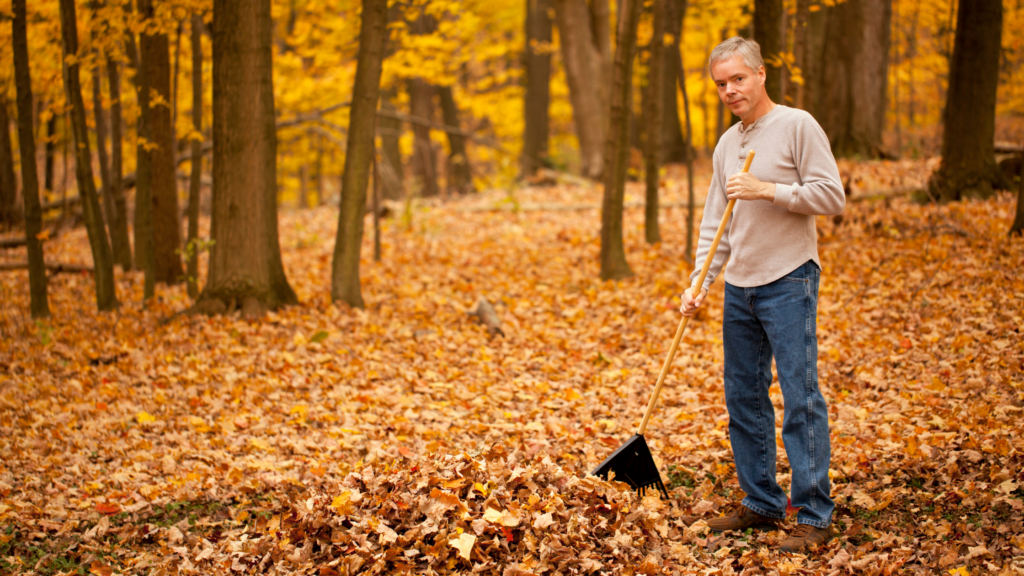Raking leaves each fall may be a picturesque activity, but its biomechanical impact on the lumbar spine can be substantial. The repetitive motions involved in this seemingly mundane task can lead to stress on the lumbar discs, potentially contributing to issues such as degenerative disc disease (DDD). Understanding the biomechanic reasons behind the challenges posed by leaf raking is crucial for adopting strategies to minimize its negative consequences.
- Repetitive Forward Bending: One of the primary biomechanic stressors during leaf raking is the repetitive forward bending of the spine. This action places a significant load on the lumbar discs, especially the intervertebral discs that act as shock absorbers between the vertebrae. Over time, this constant flexion can lead to increased pressure on the discs, potentially causing wear and tear.
- Twisting Motions: Leaf raking often involves twisting motions as individuals reach to gather leaves or turn their bodies to deposit them into bags. The lumbar spine is not well-suited for excessive rotational movements, and twisting combined with forward bending can contribute to uneven pressure on the discs. This combination increases the risk of disc herniation and accelerates degeneration.
- Prolonged Static Postures: Raking requires maintaining a bent-over position for extended periods. Prolonged static postures can lead to muscle fatigue and reduced blood flow to the lumbar region. As the muscles fatigue, the spine becomes more reliant on passive structures like the discs for support, heightening the risk of injury. The lack of movement also limits the natural lubrication of the joints, making the spine less resilient to stress.
- Lifting and Carrying: In addition to bending and twisting, lifting and carrying bags of leaves further compounds the biomechanical challenges. Improper lifting techniques, such as using the back instead of the legs, can place additional strain on the lumbar discs. The combination of lifting and the repetitive nature of the task can contribute to cumulative trauma, increasing the likelihood of disc-related issues.
- Impact on Muscular Support: The repetitive nature of raking can lead to muscular fatigue, compromising the ability of the muscles surrounding the lumbar spine to provide adequate support. As fatigue sets in, the risk of poor posture and improper body mechanics increases, amplifying the stress on the lumbar discs. Weak muscles are less effective in stabilizing the spine, making it more vulnerable to injury.
Strategies to Minimize Negative Consequences:
- Proper Body Mechanics: Adopting proper body mechanics is essential for minimizing the biomechanical impact of leaf raking. Individuals should maintain a straight back while bending at the hips and knees, distributing the load evenly across the lower body. This reduces the stress on the lumbar spine and promotes a more ergonomic posture.
- Frequent Breaks and Rotation of Tasks: Taking frequent breaks during leaf raking helps prevent muscle fatigue and allows the spine to decompress. Rotating between different tasks, such as raking for a while and then bagging leaves, can vary movement patterns and reduce the strain on specific muscle groups and the lumbar discs.
- Use of Ergonomic Tools: Choosing ergonomic raking tools with adjustable handles and padded grips can enhance comfort and reduce strain on the hands, wrists, and spine. Tools designed to minimize the need for excessive bending and twisting can contribute to a more spine-friendly raking experience.
- Core-Strengthening Exercises: Incorporating regular core-strengthening exercises into a fitness routine can enhance the stability of the lumbar spine. Strong core muscles provide additional support, reducing the reliance on the passive structures like the discs. Exercises such as planks, bridges, and abdominal strengthening can be beneficial.
- Think Outside the Box: Avoiding leaf raking altogether might be the best strategy. Your lawn mower can mulch and bag leaves. Leaf blowers are available too. Hiring out the project is another possibility.
- Consultation with Healthcare Professionals: Seeking advice from healthcare professionals, such as the Regenerative Spine & Joint Center, can provide personalized guidance. They can assess individual biomechanics, identify potential weaknesses, and offer tailored regenerative interventions, such as Discseel, to address symptoms associated with degenerative disc disease.
Fill out the form below to learn more about things to avoid with degenerative disc disease and get a consultation with an expert healthcare provider.

